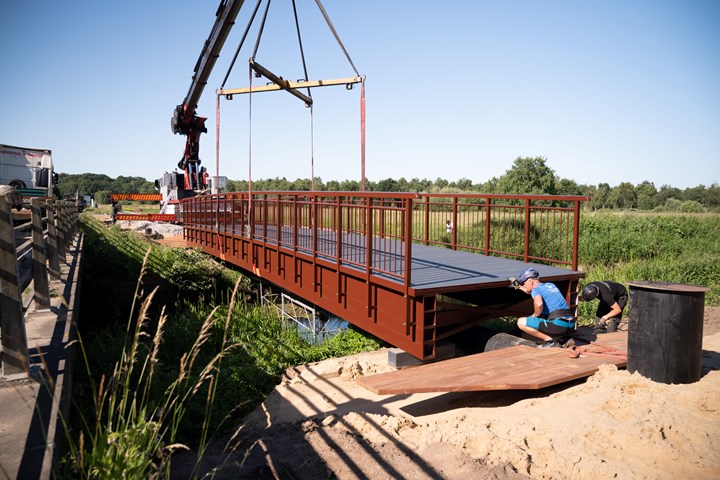EuCIA provides update on future Eurocode for composites
Publication of CEN Technical Standard (CEN/TS) 19101, now in its trial phase, will provide clear guidelines on how to design and engineer FRP composite structures.
Strong, lightweight and corrosion-resistant composite bridges offer a cost-effective alternative to steel, concrete and timber structures, like the one shown above. Photo Credit: EuCIA
The European Composites Industry Association (EuCIA, Brussels, Belgium) has issued a fact sheet outlining progress towards the new Eurocode for composites, which is set to put composite materials on the same level as conventional construction materials. The publication of CEN Technical Standard (CEN/TS) 19101: Design of Fibre-Polymer Composite Structures, the future Eurocode for composites, starts a trial phase during which designers and engineers are encouraged to apply the guidelines in real cases.
In Europe, many design guides for composites have been issued in different countries, but a more comprehensive approach is required for engineers to have confidence in designing safe structures with these materials; composites were not included in the first editions of the Eurocodes, a series of European standards which provide a common approach for the design of buildings and other civil engineering works. CEN/TS 19101, however, published in November 2022, provides clear guidance on how to design structures based on fiber-reinforced polymer (FRP) composites and is the result of more than 12 years of work in European Committee for Standardisation (CEN) Technical Committee 250 (TC250) Working Group WG4 “Fibre Reinforced Polymers.”
A further step forward was achieved on March 27, when a proposal for CEN/TC250 to develop execution provisions for FRP composite structures, referring to production, installation and maintenance procedures not included in TS 19101, was accepted.
“The outcome of the TC250 ballot was in favor of drafting the annex on execution, which will continue the work done on TS 19101 over the past years,” Prof. Luigi Ascione, leader of WG4, notes. “We will start this new activity in the coming weeks.”
“Having a dedicated technical specification for composite materials is a landmark moment for the European composites industry, establishing composites as a credible construction material alongside steel, concrete and aluminum,” adds Prof. Eric Moussiaux, CEN/TC250 WG4 Liaison Officer for EuCIA. “Extensive testing of CEN/TS 19101 within the composites industry and wider building and construction community will shape the final draft prior to its finalization as a Eurocode.”
- EuCIA joins the REFRESH wind blade recycling project.
- Epoxy Europe becomes a member of EuCIA, strengthening both companies’ voices in the composites industry in Europe.
Related Content
-
Owens Corning acquires WearDeck, composite decking and structural lumber manufacturer
Transaction supports company’s strategy to strengthen position in building and construction products. Composite decking reportedly capture more than 30% of the market and is on the rise.
-
Why aren't composites synonymous with infrastructure?
The U.S. seems poised to invest heavily in infrastructure. Can the composites industry rise to the occasion?
-
Composites enable epic interior for Museum of the Future
For this one-of-a-kind lobby, AFI pioneered digital, reconfigurable molds to achieve organic-shaped, multifunctional panels and stairwell cladding.











.jpg;maxWidth=300;quality=90)





